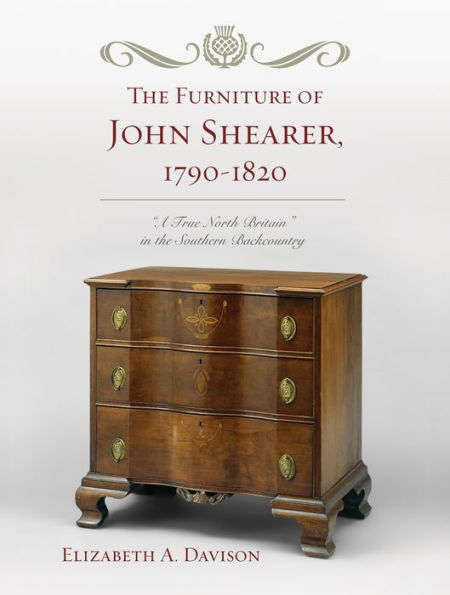Home
the Furniture of John Shearer, 1790-1820: 'A True North Britain' Southern Backcountry
Barnes and Noble
the Furniture of John Shearer, 1790-1820: 'A True North Britain' Southern Backcountry
Current price: $171.00


Barnes and Noble
the Furniture of John Shearer, 1790-1820: 'A True North Britain' Southern Backcountry
Current price: $171.00
Size: Hardcover
Loading Inventory...
*Product information may vary - to confirm product availability, pricing, shipping and return information please contact Barnes and Noble
This book is a full-color
catalogue raisonne
interprets the distinctive furniture made by John Shearer, one of the most accomplished and intriguing furniture makers during the post-Revolutionary period. Shearer emigrated from Scotland in the late 18th century and retained loyalist sympathies throughout his life, evidenced by the imagery and inscriptions sympathetic to various British causes—such as the suppression of the Irish rebellion in 1798 and the British victory in the Battle of Trafalgar in 1805—that he worked into his furniture. Davison provides insight into the furniture's appeal to Anglo-American patrons, not secret loyalists, but men still culturally tied to Great Britain. Shearer's pieces are scattered among various collections, and many of them have been identified only in the last 25 years. This catalog is the only work in which all of Shearer's known pieces of furniture are presented in a single volume.
catalogue raisonne
interprets the distinctive furniture made by John Shearer, one of the most accomplished and intriguing furniture makers during the post-Revolutionary period. Shearer emigrated from Scotland in the late 18th century and retained loyalist sympathies throughout his life, evidenced by the imagery and inscriptions sympathetic to various British causes—such as the suppression of the Irish rebellion in 1798 and the British victory in the Battle of Trafalgar in 1805—that he worked into his furniture. Davison provides insight into the furniture's appeal to Anglo-American patrons, not secret loyalists, but men still culturally tied to Great Britain. Shearer's pieces are scattered among various collections, and many of them have been identified only in the last 25 years. This catalog is the only work in which all of Shearer's known pieces of furniture are presented in a single volume.

















